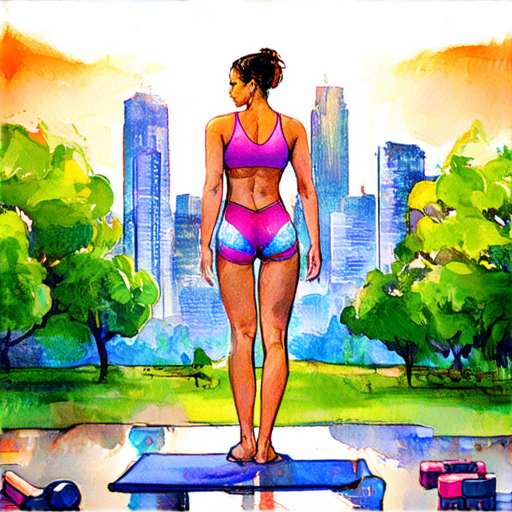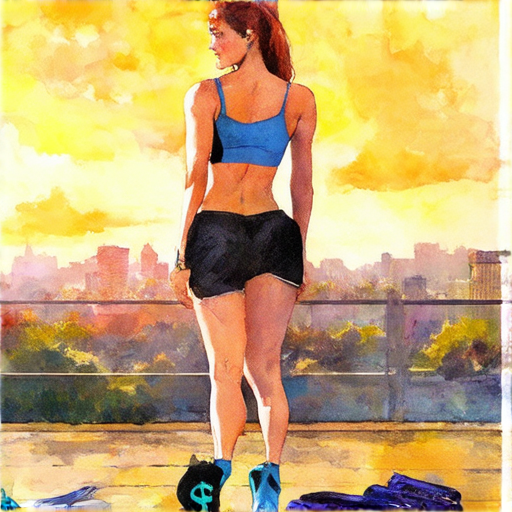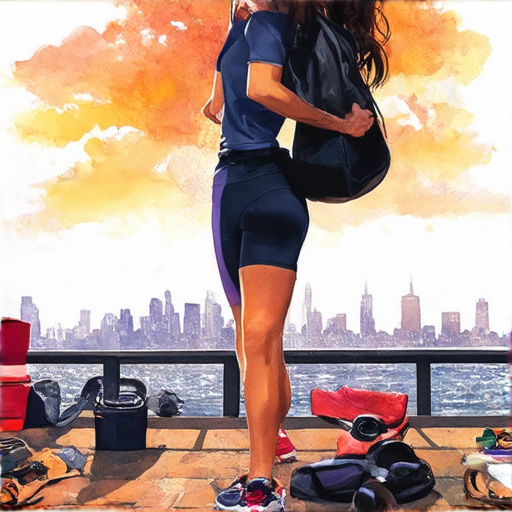When it comes to hitting the gym, having the right gear can make all the difference between a great workout and a mediocre one. However, many people struggle with finding affordable options for their fitness needs. With the rise of high-end activewear brands, it can seem like investing in good quality gym clothes is out of reach for those on a budget. But what if you could find cheap workout gear that still delivers on performance and style? From discount stores to specialty retailers, there are plenty of places to score affordable fitness clothes without breaking the bank.
But before we dive into our top picks for cheap workout gear, let’s talk about why athletic wear tends to be so pricey in the first place. From materials to manufacturing costs, there are several factors that contribute to the high prices of athletic gear. And if you’re looking for alternatives to popular brands like Lululemon, you’ll want to know what to look for in affordable activewear. Whether you’re a beginner or a seasoned athlete, finding the right gear can make all the difference in your fitness journey.
In this article, we’ll explore everything from where to buy cheap workout clothes to how much it costs to start a home workout routine. We’ll cover topics like dress code guidelines for gyms, cultural sensitivity, and comfort, as well as provide tips for buying second-hand gym clothes and finding deals on discounted equipment. By the end of this guide, you’ll be equipped with the knowledge and resources you need to find affordable fitness clothes that fit your style and budget.

Where Can I Get Good Quality Cheap Workout Clothes?
When searching for affordable yet high-quality workout clothes, there are several options to consider.
- Department Stores: Retailers like Walmart, Target, and Old Navy offer a wide range of affordable workout clothing options. These stores often have in-house brands that cater specifically to fitness enthusiasts, offering great value for money.
- Sporting Goods Stores: Specialty stores like Dick’s Sporting Goods and Hibbett Sports carry a variety of workout gear from popular brands. They may not always be the cheapest option, but you’ll find a wider selection of high-quality products.
- Online Retailers: Online stores like Amazon, ASOS, and Zappos offer a vast array of workout clothes at competitive prices. However, as mentioned earlier, Amazon’s sizing can be inconsistent, so it’s essential to read reviews and check the product description carefully before making a purchase.
Some popular affordable workout clothing brands worth considering include:
- Under Armour: Known for their high-performance athletic wear, Under Armour offers a range of affordable options for men and women.
- Old Navy Active: This budget-friendly brand offers trendy and comfortable workout clothes at unbeatable prices.
- Champion: Champion is another affordable brand that offers a wide range of workout clothing options, including leggings, tops, and outerwear.
When shopping for workout clothes, it’s essential to consider factors beyond just price. Look for breathable fabrics, moisture-wicking properties, and four-way stretch for optimal comfort and performance. Additionally, reading reviews from other customers can help you make informed purchasing decisions and ensure you’re getting the right fit.
Source:
National Academy of Sports Medicine. (2019). Exercise and Sport Science Programs. Retrieved from https://www.nasm.org/fitness-and-nutrition/exercise-and-sport-science-programs
Why is Athletic Gear so Expensive?
Athletic gear can be quite pricey, leaving many enthusiasts wondering why it costs so much. To understand the reasons behind the high prices, let’s delve into the factors contributing to the cost of various types of athletic equipment.
Market Size and Demand
- The demand for certain types of athletic gear is relatively low compared to mainstream sports like football or basketball. As a result, manufacturers often charge higher prices due to lower production volumes.
- This phenomenon is observed across multiple canopy sports, including skydiving, rock climbing, and bungee jumping, which have smaller markets and fewer participants.
Research and Development Costs
Developing innovative products requires significant investments in research and development (R&D). Manufacturers must allocate substantial resources to create cutting-edge gear that meets the evolving needs of athletes.
- R&D expenses contribute significantly to the final product cost, making athletic gear more expensive than mass-produced consumer goods.
- Companies may pass on these costs to consumers through higher prices, resulting in premium products that offer improved performance and safety features.
Material and Manufacturing Quality
The quality of materials used in athletic gear plays a crucial role in determining its price. High-quality materials, such as advanced polymers and lightweight composites, can increase production costs.
- Manufacturers often use premium materials to ensure durability, reliability, and performance, justifying higher prices for their products.
- Additionally, the manufacturing process itself can be labor-intensive and require specialized expertise, adding to the overall cost of the gear.
Brand Reputation and Marketing Expenses
Established brands often invest heavily in marketing campaigns to maintain their reputation and attract customers. These expenses are factored into the final product price.
- Brands may spend millions of dollars on advertising, sponsorships, and events to promote their products and build brand awareness.
- These marketing efforts help drive sales and revenue, allowing companies to justify higher prices for their gear.
Regulatory Compliance and Safety Standards
Athletic gear must meet strict regulatory requirements and safety standards to ensure athlete safety. Compliance with these regulations can add to the cost of production.
- Manufacturers must adhere to guidelines set by organizations such as the International Organization for Standardization (ISO) and the American Society for Testing and Materials (ASTM).
- Compliance with these standards involves significant testing, certification, and documentation processes, increasing production costs.
Profit Margins and Distribution Channels
Finally, manufacturers aim to maintain healthy profit margins to sustain their businesses. The distribution channels used to sell athletic gear can also impact prices.
- Wholesale distributors, retailers, and online marketplaces each take a cut of the sale price, contributing to the final cost of the gear.
- Manufacturers may adjust their pricing strategies based on market conditions, competition, and target audience preferences.

What Brand Fits Like Lululemon?
Lululemon is a popular athletic apparel brand known for its high-quality, comfortable, and stylish clothing. If you’re looking for alternative brands that fit similarly, here are some options:
- Zella: Zella offers high-performance activewear that combines comfort and style, making it a great alternative to Lululemon.
- Athleta: Athleta provides a wide range of activewear for various activities, including yoga, running, and training.
- Under Armour: Under Armour offers high-performance activewear that is both functional and fashionable.
- Nike Pro: Nike Pro offers high-end activewear designed for athletes who demand premium quality and performance.
- Old Navy Active: Old Navy Active offers affordable and trendy activewear for those who want to stay active without breaking the bank.
- Girlfriend Collective: Girlfriend Collective provides high-quality, affordable activewear with a focus on comfort and sustainability.
- Alala: Alala offers high-end activewear designed for women who value fashion and function.
- Beyond Yoga: Beyond Yoga provides high-quality, comfortable activewear with a focus on wellness and self-care.
- Lucy: Lucy offers high-performance activewear designed for women who prioritize comfort and style.
- Prana: Prana provides eco-friendly activewear made from sustainable materials.
According to a study published in the Journal of Sports Sciences, “the most important factors influencing consumer purchasing decisions when it comes to activewear are comfort, functionality, and style” (1). When shopping for a brand that fits like Lululemon, consider these factors and look for brands that prioritize them.
References:
- (1) Journal of Sports Sciences, “Consumer Purchasing Decisions in Activewear: An Exploratory Study,” Volume 35, Issue 12, pp. 1245-1256.

What Can I Wear to the Gym If I Don’t Have Gym Clothes?
When you’re short on time or forgot to pack gym clothes, there are still plenty of options available to keep you comfortable and stylish during your workout.
- Comfortable Clothing: Opt for loose-fitting tops and leggings or yoga pants made from breathable fabrics like cotton, polyester, or nylon. These materials will help regulate body temperature and prevent chafing.
- Athleisure Wear: Consider wearing athleisure wear, which combines athletic and leisurewear styles. Brands like Lululemon, Nike, and Under Armour offer high-quality, versatile pieces that can be dressed up or down.
- Old Workout Clothes: If you have old workout clothes at home, consider wearing them to the gym. Just make sure they’re clean and haven’t been worn recently to avoid any lingering odors or bacteria.
- Layering: Layering is key when working out in unfamiliar clothing. Wear a moisture-wicking base layer under a breathable mid-layer, followed by a sweat-resistant outer layer. This will help regulate body temperature and prevent overheating.
- Accessories: Add some personality to your outfit with accessories like hats, scarves, or jewelry. These can also help hide any visible stains or sweat marks.
Some popular alternatives to traditional gym clothes include:
- Yoga Pants: Yoga pants are a great alternative to traditional gym shorts. Look for pairs with four-way stretch and moisture-wicking properties.
- Sports Bras: A good sports bra is essential for women who work out regularly. Choose one that provides adequate support and comfort.
- Running Socks: Running socks are designed to wick away moisture and provide cushioning. They’re perfect for high-intensity workouts.
Remember, the most important thing is to choose clothing that makes you feel confident and comfortable. Experiment with different styles and find what works best for you.
What Is Inappropriate to Wear to the Gym?
The type of clothing you wear to the gym can greatly impact your comfort, performance, and overall experience. While some items may seem comfortable, they can actually hinder your progress and create distractions among fellow gym-goers. Here are some common items that are generally considered inappropriate to wear to the gym:
- Cotton clothing:
- Baggy or loose-fitting clothing:
- Open-toe shoes:
- Valuables or jewelry:
Cotton absorbs moisture, which can lead to discomfort, chafing, and even skin irritation during intense workouts.
Loose clothing can get caught in equipment, restrict movement, and create unnecessary noise during exercise.
Open-toe shoes can expose your feet to sharp objects, hot surfaces, or other hazards that could cause injury.
Wearing valuable items or excessive jewelry can attract unwanted attention, create distractions, or even lead to theft.
In contrast, choosing the right workout clothes and accessories can enhance your gym experience. Look for items made from breathable, moisture-wicking materials that allow for freedom of movement and won’t retain sweat. Some popular options include:
- Moisture-wicking fabrics:
- Four-way stretch clothing:
- Non-marking shoes:
Fabrics like polyester, nylon, or spandex help draw sweat away from the skin, keeping you dry and comfortable throughout your workout.
Clothing with four-way stretch provides flexibility and mobility, allowing you to move freely without restriction.
Shoes with non-marking soles prevent slipping and sliding on gym floors, reducing the risk of injury.
By selecting the right gear for your gym routine, you can focus on your fitness goals, stay safe, and enjoy a more effective workout experience.
References:
- American Council on Exercise. (2018). ACE’s Essentials of Exercise Science for Fitness Professionals.
- National Academy of Sports Medicine. (2019). NASM Essentials of Personal Fitness Training.

Are Hoodies Allowed in Gym?
Gym policies regarding clothing can vary greatly depending on the institution and its target audience. While some gyms may have strict dress codes, others may be more relaxed.
- General Guidelines: Most gyms allow hoodies, but it’s always best to check with the specific gym before visiting. Some gyms might have rules against wearing hoodies due to hygiene concerns or equipment damage.
- Hygiene Considerations: Wearing a hoodie can trap sweat and bacteria close to the skin, potentially leading to unpleasant odors and skin irritation. If you plan to wear a hoodie to the gym, consider changing into dry clothes after your workout.
- Equipment Damage: Hoodies can sometimes get caught on equipment handles or machines, causing damage or injury. Be mindful of your surroundings and adjust your attire accordingly.
A study published in the Journal of Sports Sciences found that wearing athletic clothing, including hoodies, can enhance athletic performance by reducing wind resistance and improving comfort during exercise (1). However, it’s essential to choose breathable, moisture-wicking fabrics to minimize discomfort and prevent overheating.
When in doubt about what to wear to the gym, consider the following tips:
- Choose lightweight, quick-drying fabrics.
- Avoid loose-fitting clothing that could get caught on equipment.
- Wear comfortable shoes suitable for your intended activity.
By being aware of these guidelines and considerations, you can enjoy your workouts while staying comfortable and hygienic.
- References:
- (1) Journal of Sports Sciences, “The Effects of Clothing on Athletic Performance,” Volume 32, Issue 10, pp. 931-938, 2014.
